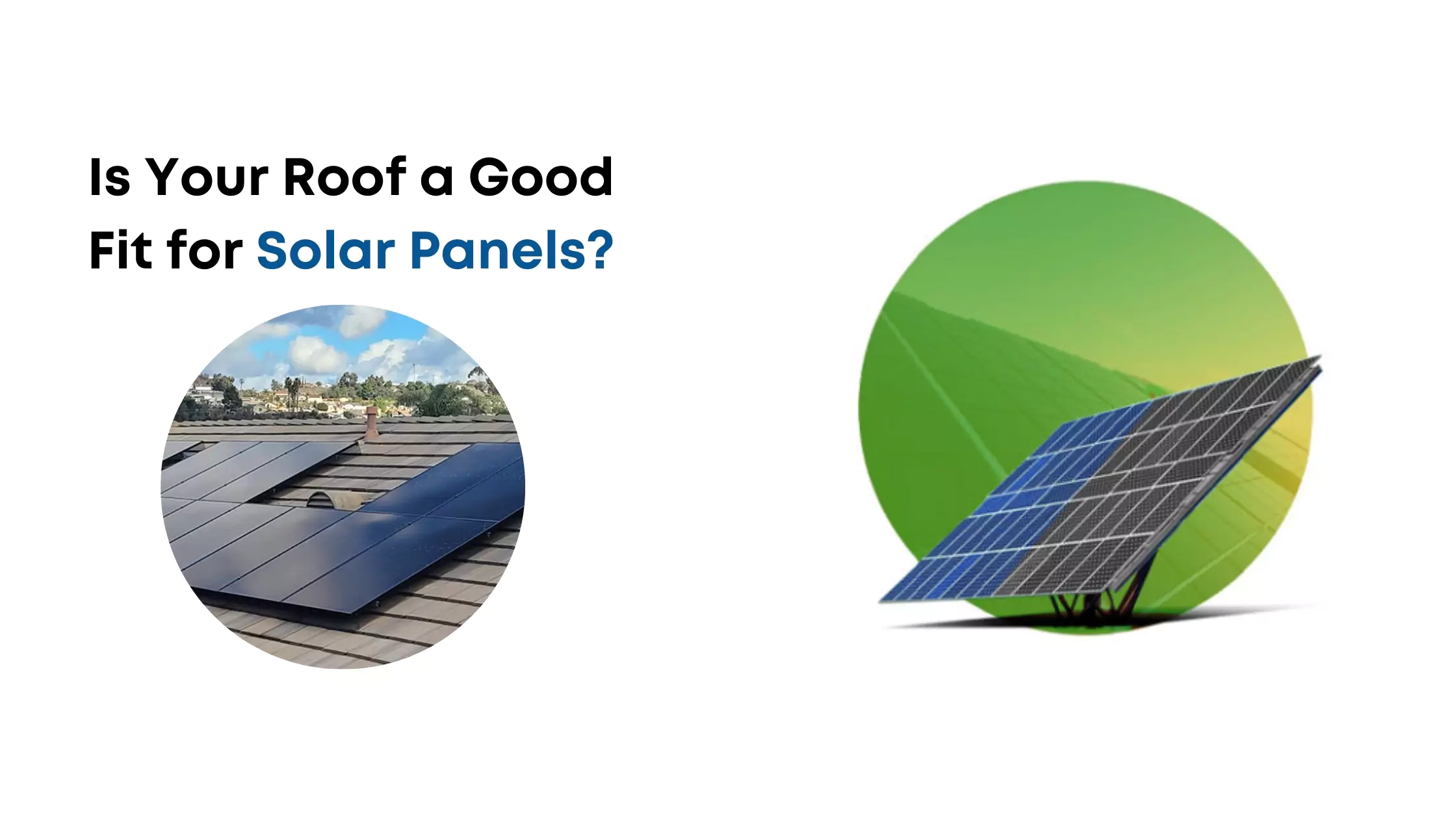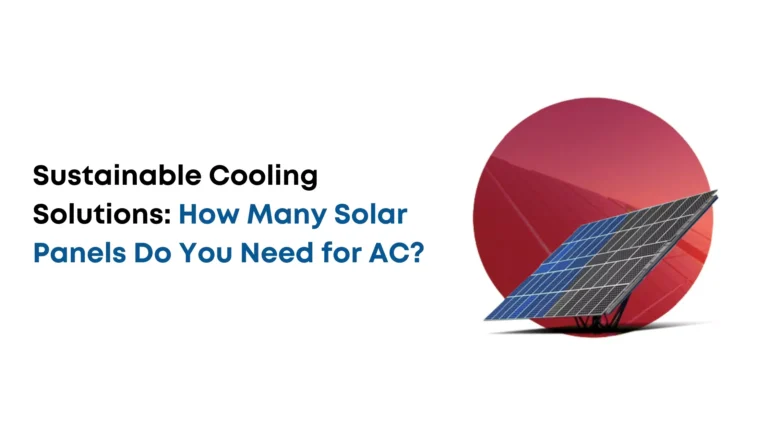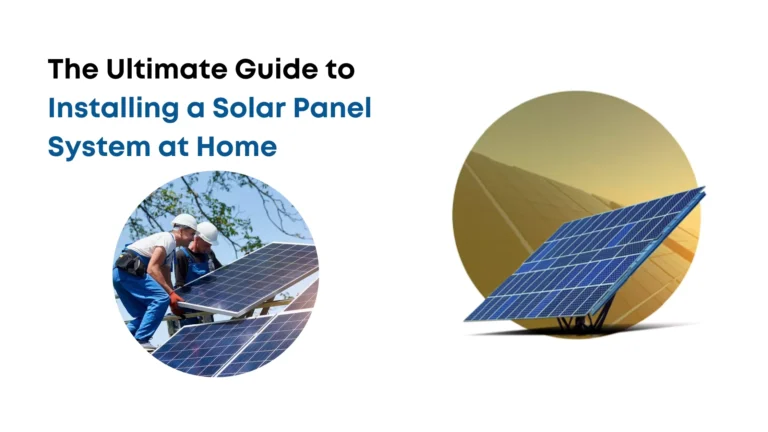Installing solar panels on your roof can be a great way to save on energy bills and reduce your carbon footprint. A lot of carbon footprint conscious people are moving towards energy saving using solar panels. However, not every roof is suitable for solar panel installation. Here’s a blog to help you determine if your roof is a good fit for solar panels by considering several important factors.
Does Your Roof Face the Right Direction?
The direction your roof faces plays a significant role in how effective your solar panels will be. In the northern hemisphere, south-facing roofs are ideal because they receive the most sunlight throughout the day. If your roof faces east or west, it can still work, but the efficiency might be slightly lower. North-facing roofs are generally not recommended for solar panel installation because they get the least amount of sunlight.
Does Your Roof Have Enough Space?
The amount of available space on your roof is another crucial factor. Solar panels need ample space to capture sunlight efficiently. If your roof is too small or has many obstructions like chimneys, vents, or skylights, it might limit the number of panels you can install. A professional solar installer can help you determine how many panels can fit on your roof and how much energy they will generate.
Does Your Roof Experience Any Shading?
Shading can significantly reduce the effectiveness of your solar panels. Trees, nearby buildings, and other obstructions can cast shadows on your roof, reducing the amount of sunlight your panels receive. It’s important to assess your roof for shading issues before installing solar panels. In some cases, trimming trees or adjusting the placement of the panels can help mitigate shading problems.
Is Your Roof at the Correct Angle?
The angle of your roof affects how well your solar panels can capture sunlight. Ideally, solar panels should be installed at an angle that matches the latitude of your location. For example, if you live at a latitude of 30 degrees, your panels should ideally be installed at a 30-degree angle. If your roof’s angle isn’t optimal, mounting systems can be used to adjust the angle of the panels.
Do You Have Any Lower Roofs?
If your property has multiple roofs at different heights, it’s important to consider the impact of these lower roofs on your solar panel installation. Lower roofs can put shadows on higher roofs, reducing the amount of sunlight available for the panels. Make sure to evaluate the layout of your entire property to identify any potential shading issues caused by lower roofs.
Does Your Roof Have a Loft Space Underneath It?
Having a loft space underneath your roof can be both an advantage and a consideration for solar panel installation. The loft space can provide easy access for wiring and other installation needs. However, it’s essential to ensure that the loft is well-insulated and ventilated to prevent overheating, which can affect the performance of your solar panels.
Does Your Loft Have Enough Room?
If you plan to use the loft space for solar panel installation equipment, make sure it has enough room to accommodate everything. This includes inverters, batteries (if you’re planning to store excess energy), and any other necessary equipment. A cramped loft space can make installation and maintenance more challenging.
Does Your Loft Have Spray Foam Insulation?
Spray foam insulation can be a concern when installing solar panels. While it provides excellent insulation, it can also restrict access to certain areas of your roof. If your loft has spray foam insulation, it’s important to work with a professional installer who can navigate around the insulation without causing damage.
What Type of Tiles Does Your Roof Have?
The type of tiles on your roof can affect the installation process and the overall suitability for solar panels. Asphalt shingles are the easiest to work with, while materials like slate or clay tiles can be more challenging and may require specialized mounting systems. Metal roofs are also a good option for solar panels, as they can often be installed with fewer penetrations.
Additional Considerations
Roof Age and Condition: Before installing solar panels, it’s important to assess the age and condition of your roof. If your roof is old or in poor condition, it might be a good idea to replace or repair it before installing solar panels. This can prevent the need for costly repairs or reinstallation in the future.
Local Regulations and Permits: Installing solar panels may require permits and must comply with local regulations. Check with your local government or homeowners’ association to understand the requirements and ensure that your installation meets all necessary standards.
Energy Needs: Consider your household’s energy needs when planning your solar panel installation. A professional installer can help you determine the right size and number of panels to meet your energy consumption.
Financial Incentives: Many governments offer financial incentives, such as tax credits or rebates, to encourage solar panel installation. Research the available incentives in your area to reduce the overall cost of your installation.
Conclusion
Determining if your roof is a good fit for solar panels involves assessing various factors, including the direction and angle of your roof, available space, shading issues, and the type of roof tiles. By carefully evaluating these aspects, you can ensure that your solar panel installation is efficient and effective, providing you with clean energy for years to come. Working with a professional solar installer can help you navigate these considerations and optimize your solar panel setup for the best results.




